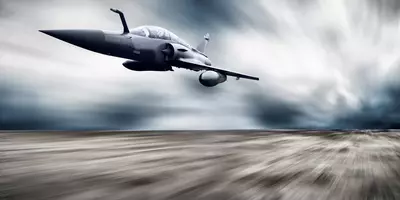
31 Mar 2025 ● RAeS Aerospace Jobs
5 tips for aerospace engineers seeking new opportunities
The exciting world of aerospace engineering is your domain, but ambition calls – a new challenge, a fresh company culture, or the chance to delve deeper into a specialised field. Whatever your reason for exploring new opportunities, your CV needs to be more than just a starting point; it needs to be a comprehensive document showcasing your potential to discerning recruiters.
1. Align Your Skills & Achievements:
Forget the "one-size-fits-all" approach! Conduct thorough research on each company and specific role you're interested in. Tailor your CV and cover letter to highlight the skills and experiences that perfectly align with their specific needs. Keywords are crucial, so strategically integrate terms from the job description throughout your application to ensure it resonates with applicant tracking systems and reaches the right recruiter.
2. Quantify Your Impact:
Numbers tell a compelling story. Don't simply list past projects; quantify your accomplishments. Did you optimise a design, resulting in a significant weight reduction for a aircraft? Did your calculations contribute to a successful mission to Mars? Use specific metrics to showcase the value you add, demonstrating your problem-solving prowess and ability to deliver concrete results.
3. Highlight Software Expertise:
Mastering industry-specific software is paramount in aerospace engineering. Clearly and concisely list your proficiency in tools like MATLAB, CATIA, ANSYS, or others relevant to your target position. Don't hesitate to highlight any certifications or advanced functionalities you've mastered; expertise in these tools can be the differentiator that propels you into the interview stage.
4. Showcase Initiative & Leadership:
While participation is commendable, elaboration and collaboration is key! Describe your role in projects, the challenges you tackled, and your contributions to the final outcome. Did you lead a team of engineers in developing a novel aircraft wing design? Did you independently design a critical component for a satellite? This showcases your initiative, problem-solving skills, and teamwork abilities – all highly valued qualities in the aerospace industry.
5. Network to Fuel Your Ascent:
Getting involved in professional societies like Royal Aeronautical Society (RAeS), American Institute of Aeronautics and Astronautics (AIAA), or relevant student organisations demonstrates your passion and commitment to the industry. Mention workshops, conferences, or competitions you've participated in, highlighting any awards or achievements. Remember, networking opens doors and can connect you with valuable opportunities, potentially leading you to your dream job.
Bonus Tip: Proofread meticulously. Typos and grammatical errors create a negative first impression. Ask a trusted friend or career counsellor to review your application for clarity, conciseness, and impact.
Remember: Your CV is your launchpad to exciting new opportunities. By investing time in tailoring it to each specific role and highlighting your unique skills and experiences, you'll be well-equipped to navigate the vast aerospace landscape and land the job that propels you to new heights!
Additional Resources:
- Royal Aeronautical Society (RAeS): https://www.aerosociety.com/
- Careers in Aerospace: https://www.careersinaerospace.com/career-resources/
- American Institute of Aeronautics and Astronautics (AIAA): https://www.aiaa.org/
- National Society of Black Engineers (NSBE): https://www.nsbe.org/
- Society of Hispanic Professional Engineers (SHPE): https://shpe.org/
- Career Flightpath: Career Flightpath Platform
- RAeS Aeroversity: RAeS | Dashboard


